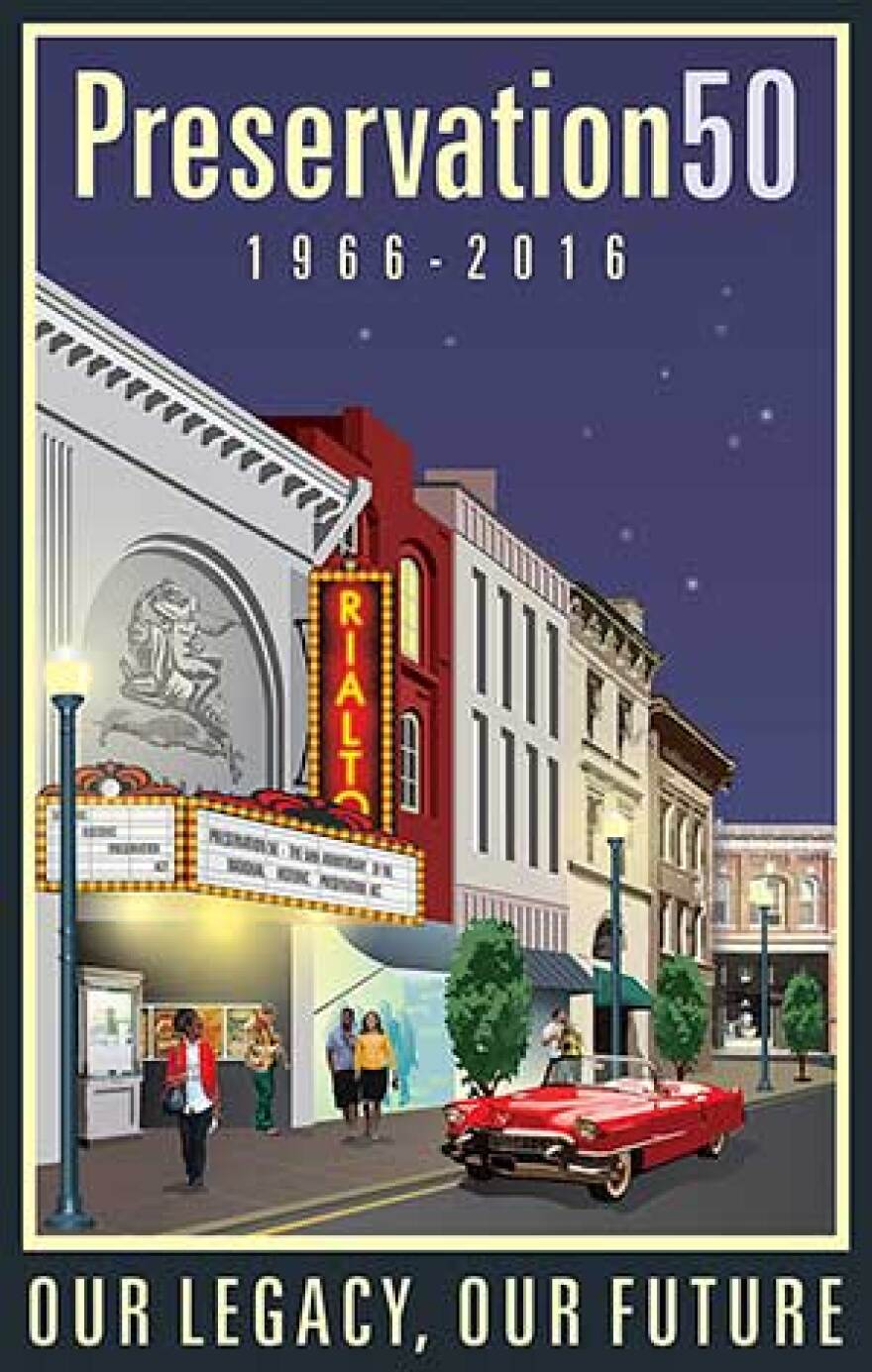This week marks the the 50th anniversary of the National Historic Preservation Act and the Kentucky Heritage Council is holding a day-long celebration this Friday. WUKY's Alan Lytle talks with the Heritage Council's Diane Comer about the event and what the NHPA has meant to the Commonwealth.
Get the full schedule here.
A history of the Act:
Passed in 1966, the National Historic Preservation Act was landmark legislation that came about as a response to destructive urban “renewal” policies and the widespread construction of interstate highways cutting swaths through the American landscape. The NHPA established a leadership role for the federal government to protect and preserve our nation’s historic buildings and paved the way for the establishment of state historic preservation offices, including KHC.

So what was going on in 1966? "Bonanza" was the most popular show on television, "Thunderball" with Sean Connery as James Bond was the most popular movie, Simon and Garfunkel's "Sounds of Silence" was the most popular song, and transistor radios were what passed for high-tech listening devices.
Mass-produced housing was booming, the construction of interstate highways was cutting swaths of destruction through the American landscape, and historic buildings and neighborhoods were being leveled in cities across the country as urban "renewal" policies were implemented in an effort to address blight and suburban flight.
The wholesale loss of these historic resources sparked a grassroots effort among citizens to seek a new and more comprehensive approach to preservation. In 1965, a special committee of the U.S. Conference of Mayors, the National Trust for Historic Preservation, the White House and several members of Congress produced a report and plan of action, ""With Heritage So Rich."
This report laid the foundation for federal government intervention, and the National Historic Preservation Act was passed into law and signed by President Lyndon B. Johnson on October 15, 1966. For the first time, federal law defined a comprehensive government role in preservation policy, leadership and program responsibility, and also provided a federal-state framework by creating a means for state historic preservation offices to be established to help implement this policy.
The legislation also established the Section 106 process requiring federal agencies to take into account the effects of their undertakings on historic properties; created the Advisory Council on Historic Preservation, an independent federal agency to advise the President and Congress; and set up the National Register of Historic Places. Later amendments extended this framework through the Certified Local Government Program, which encourages local governments to seek designation in order to more effectively address historic preservation and planning.
The Kentucky Heritage Commission was created by the state legislature not long after, and in the 1980's the name was changed to the Kentucky Heritage Council. It is not an understatement to say that our Commonwealth would look very different today without the work of this agency.
It's funny to consider that in 1971, the first statewide survey of "historic" sites in Kentucky was completed, consisting of a mere 1,951 buildings - mostly the high-style architecture that one would expect. Today we are approaching a database of nearly 100,000 surveyed historic sites, including archaeological deposits, places associated with Kentucky's African American and Native American heritage, battlefields, schools, churches, rural hamlets, houses of every type, and historic downtowns in communities of all sizes - among many other diverse resources.






